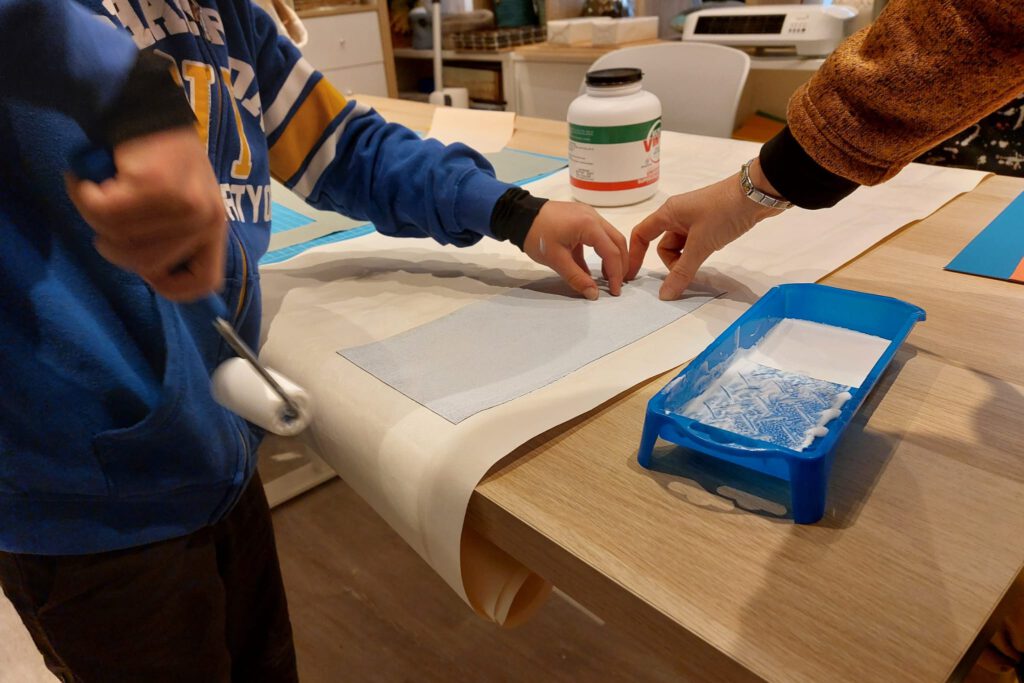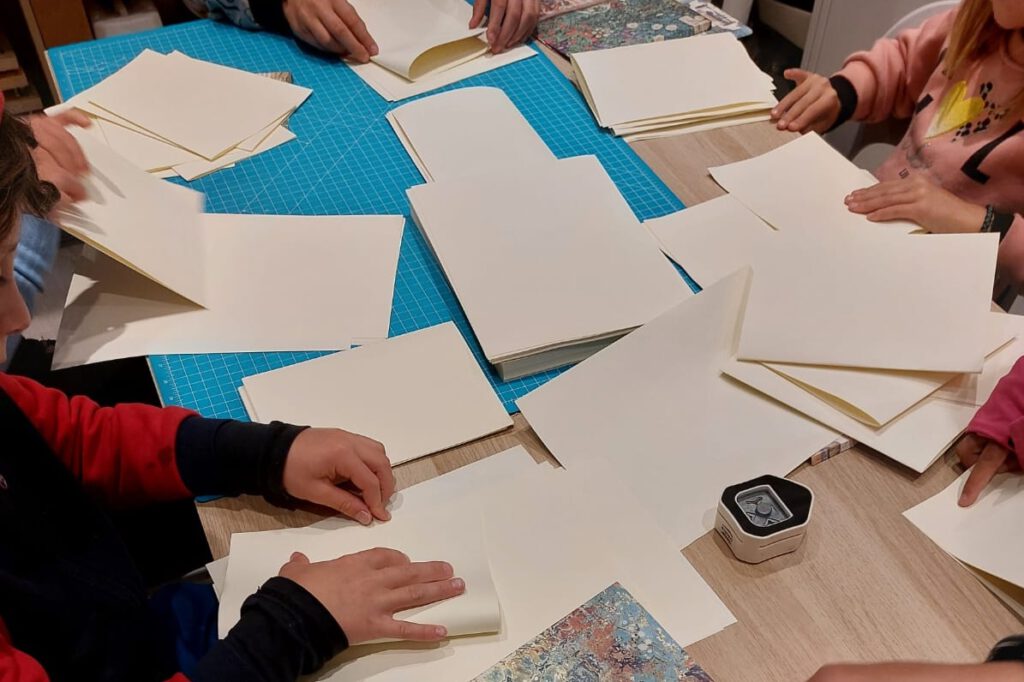The final lesson of the course culminated in the firing of all the raku and bucchero pieces in the outdoor Raku kiln. Heated to approximately 960 degrees Celsius, the kiln transformed our creations. Our teacher, clad in protective gear and a gas mask, extracted the glowing pieces with pliers and plunged them into a barrel filled with sawdust. As the sawdust ignited, the lid was sealed, trapping the smoke within the barrel. While the children observed this magical process from a safe distance, the thermal shock of the rapid cooling caused the glazes to crack and the smoke to darken the unglazed surfaces. The striking contrast between the vibrant glazes and the deep black hues was truly breathtaking when the pieces were taken out of the barrels to cool down completely. The bucchero pieces underwent a similar firing process, emerging with a rich, smoky black color. At the end of the lesson, each child proudly carried home their unique artwork. As we concluded this course, we also finished the final chapter of our fairytale. A Toast The following dawn, the twins entered the forest, dragging a heavy basket. The excitement overwhelmed them, suspended between the wait and the curiosity to discover the result of their work. When they reached the cave, they found the entrance deserted. “Are we too early?” asked Marika, but Mirko, more reckless, climbed onto a rock and peered inside. “Let’s wait here,” he concluded. They did not have to wait long. The Elf appeared, beaming: “Good morning, little artists! You are early!” The twins, impatient and a little nervous, showed her the basket full of provisions. “A banquet to celebrate!”, exclaimed the Nymph, who arrived shortly after with the Fairy. Suddenly, a roar echoed from the cave. The dragon, flaming and imposing, made its appearance. “It’s time to reveal the mystery!”, exclaimed the Elf. Gently, she began to remove the earth from the hole where they had fired their work yesterday. “Can you help me!”, she invited the twins. Mirko and Marika touched the still warm earth. Marika, with trembling hands, discovered something solid. Carefully, she swept away the ash and there, before her eyes, she saw her little bird again, transformed into a splendid sculpture with a bright yellow color. “It’s wonderful!”, she exclaimed, delicately caressing the work. Mirko also found his blue shark, more threatening and fascinating than ever. The dragon, looking at their radiant faces, roared with satisfaction. “You are true artists!”, he complimented them. “You have created beautiful creations.” The Fairy, with a wave of her magic wand, set up an outdoor banquet. While they enjoyed the delicacies, the dragon proposed a toast: “To the creativity of our young artists! May your works continue to amaze us!”










